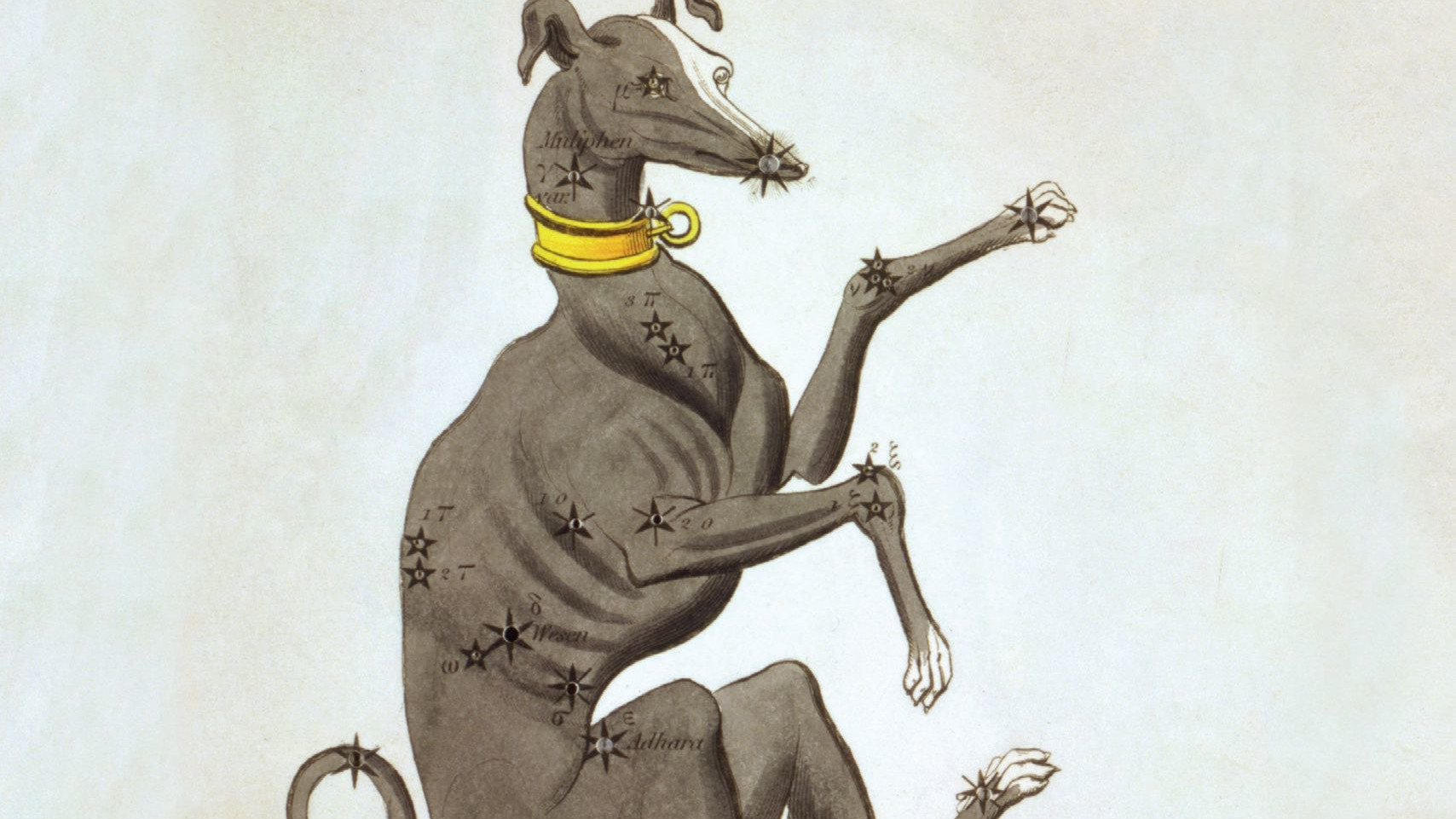Canis Major
Discover why gleaming Sirius was both a good and a bad omen for people in ancient times.
 Orion's faithful hunting companion: Canis Major, with gleaming Sirius at his nose tip.
Orion's faithful hunting companion: Canis Major, with gleaming Sirius at his nose tip.Canis Major – together with Canis Minor – is not only the faithful companion of Orion, the celestial hunter, this constellation is also home to the brightest star in the entire night sky: Sirius. This is due to its high luminosity, it is 25 times more luminous than our Sun (although it is "only" 70 percent larger than our Sun), and also to its proximity to Earth. With a distance of 8.6 light years, it is one of the closest stars; only a few faint dwarf stars are even closer to us, so this gleaming winter star makes it to place 5.
Sirius is often found in fantasy and science fiction literature precisely because of its attribute as the brightest star. Even in the Moon voyage adventure "True Story" written by Lucian of Samosata around the year 150, which is regarded as the first ever science fiction story, soldiers from a planet near Sirius appear riding on winged acorns, fighting in the war between the Moon and the Sun.
Fertile Nile valley, scorched earth
In Ancient Egypt, the year began with the most important event for agriculture: the annual flooding of the Nile. It made the dry land fertile, on which the wealth and well-being of the entire empire of the Pharaohs depended. This coincided with Sirius' re-appearance in the summer morning sky, so the brightest star of Canis Major symbolised the beginning of the year and indicated the approaching flood.
In Egypt the star was called Sopdet (Egyptian) or Sothis (Greek), but to the Greeks it was known as Seirios. In Homer's epic the Iliad, Sirius' luminosity was compared to Achilles' shiny armour. The term ‘dog days’ comes from Ancient Greece and refers to the hottest summer days. Unlike in Egypt, here the returning Dog Star was considered a bad omen, as it burned and dried up the whole country with its dreadful heat.
Star clusters and exotic features
Due to its proximity to the (hardly visible) winter Milky Way, you will mainly find open clusters in Canis Major. Foremost is M41 (which is even visible to the naked eye), but NGC 2360 and NGC 2362 are also definitely worth a look. For fans of faint diffuse nebulae, NGC 2359, also known as Thor’s Helmet, is highly recommended. Here a massive giant star is dying, and has been shedding its outer layers of atmosphere for around 100,000 years. The object is one of two so-called Wolf-Rayet nebulae which are accessible with amateur telescopes.
Another of the constellation’s exotic stellar features is VY CMa, because this variable red supergiant is one of the largest known stars. With a diameter 1,400 times greater than our Sun, it would extend beyond Jupiter's orbit if it were in our planetary system! It shines with 300,000 times the Sun's luminosity.
 Outline map of the constellation of Canis Major with our observing recommendations. J. Scholten
Outline map of the constellation of Canis Major with our observing recommendations. J. ScholtenAuthor: Nico Schmidt / Licence: Oculum-Verlag GmbH
